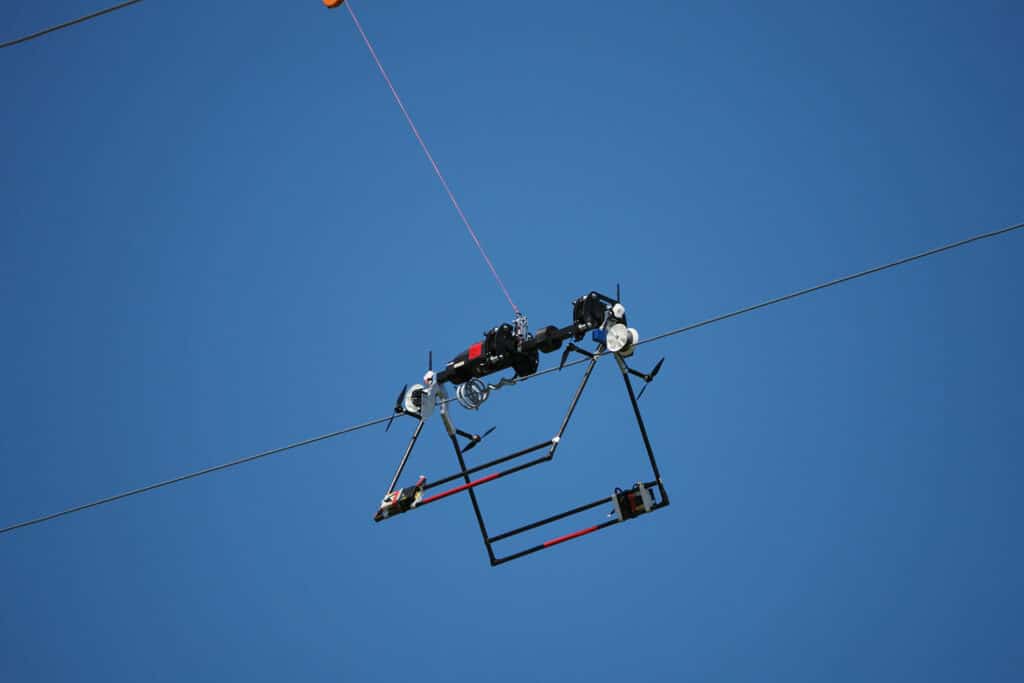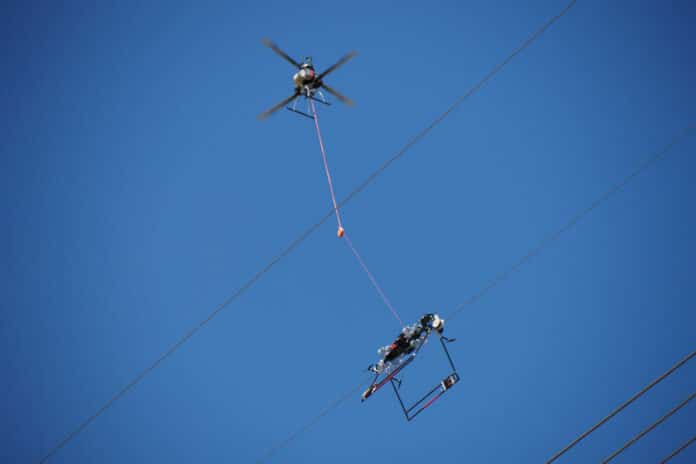Birds are beautiful creatures that fill the sky with life and color, but they also face many dangers from human activities. It’s sad that large numbers of birds are often killed when they collide with unseen overhead power lines. These collisions can cause severe injury or death to the birds, as well as damage to the power infrastructure.
One solution to this problem is to bury power lines underground, although this can be expensive and difficult to implement in some areas. Another solution is to use bird diverters, which are small devices that can be attached to power lines to make them more visible to birds.
In a step forward to protect birds and ensure that they can safely coexist with human infrastructure, FulcrumAir and PLP (Preformed Line Products) have partnered to launch an automated robotic system for installing helically-shaped bird diverters on overhead power lines.
The Mini LineFly is seemingly the world’s most advanced automated robotic system that automatically and precisely installs PLP’s Bird-Flight Diverter on overhead lines.

Diverters are a helpful and important tool for protecting birds near power lines. Using the Mini LineFly to apply the Diverters seems like a smart solution that can save time and reduce the risk of injury for workers who would otherwise have to do the job by hand while also exponentially increasing project efficiency.
“The Mini LineFly not only offers the most efficient method for installing bird diverters but, more significantly, contributes to enhancing the safety environment for utility workers around the world,” said Ryan Ruhlman, President of PLP.
The Mini LineFly accurately places the PLP Bird-Flight Diverter at predetermined intervals to help safeguard wildlife from accidental contact with power lines. The self-powered robot is lowered onto a section of the power line by a drone and then moves along the length of that section, stopping periodically to apply Diverters from an onboard supply. The propellers on either side of the robot help keep it from swaying with the line in high winds.
The Mini LineFly can be lifted off by an E2500 HP coaxial-rotor drone and moved over to the next section when it reaches the end of one section. This process only requires two ground-based operators, one for the drone and one for the robot.
This device enhances line visibility and reduces the probability of unintended bird collisions, protecting diverse avian species and preventing costly power outages.
The first implementation of robotically installed PLP Bird-Flight Diverters took place during the recent High Banks Wind Project in Kansas, where nearly 15,000 bird diverters were installed along a 75-mile (120.7-kilometer) 345 kV transmission line. The High Banks Wind Project is a renewable energy project that delivers approximately 600 megawatts of energy to customers in the American Midwest.
“We are extremely pleased with how the Mini LineFly performed during this demanding project,” said Patrick Arnell, President & CEO of FulcrumAir in the press release. “Our mission is to develop and operate equipment that assists electric utilities with the industry’s ongoing challenges, including staffing shortages, the increased need for safer work sites, and overall project efficiency requirements.”
